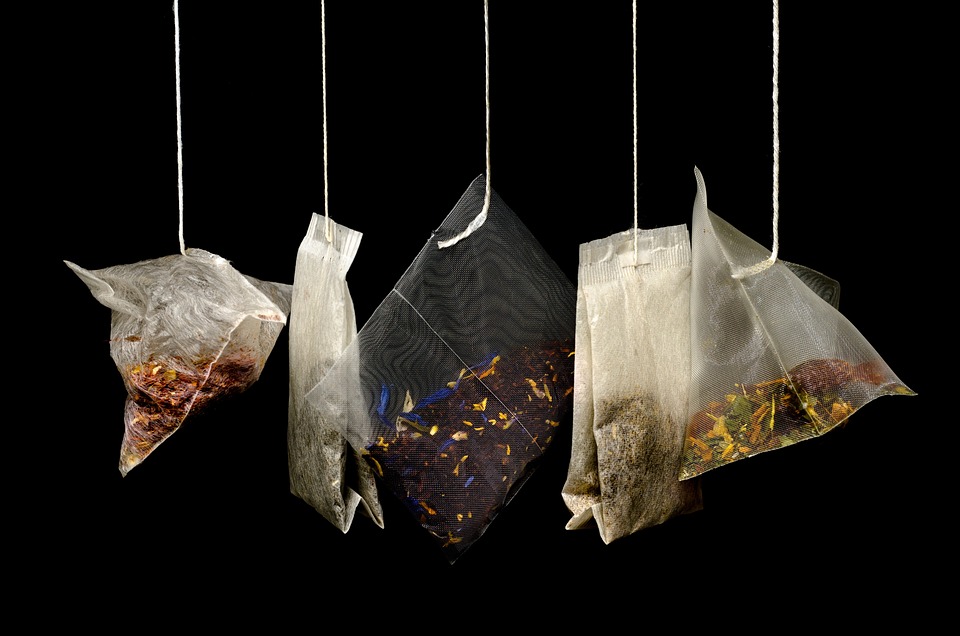
What herbs do you think of in relation to cooking? Rosemary, Basil, Oregano, Peppermint, and Sage? It’s possible that Lavender, Thyme, and Tarragon are also on your list. There is an array of frequent kitchen herbs that are often found in the kitchens of people who prefer a more natural lifestyle.
We cultivate them for their medical benefits or to incorporate them as a seasoning in our preferred meals. But herbs have far more to offer than these popular elements. An abundance of mostly unfamiliar herbs with remarkable medical advantages, unique flavors, gorgeous vegetation, and captivating fragrances can be found in the world, just ready for the ardent herbalist to nurture and admire them.
Below is a list of some healing herbs that don’t get enough credit and could be perfect to have in your garden.
Agrimony
Agrimonia is a genus of plants belonging to the Rosaceae family, which also includes the rose, apple tree, almond, and strawberry. It has a long history of being used as a natural remedy to heal ailments related to the eye, with its Greek name of Argemone meaning “plant that heals the eye.” It is also known for its effectiveness in treating wounds, skin conditions, coughs, sore throats, and gastrointestinal issues, and as a sleep aid.
Alfalfa
Alfalfa (Medicago sativa) is advantageous to humans too, not just livestock because it has an abundant amount of protein, minerals, and other benefits. Alfalfa is an excellent remedy for dealing with intense nausea, such as that caused by morning sickness. It is also an effective natural treatment for urinary tract conditions like kidney stones and UTIs. Alfalfa is helpful for cleaning toxins from the liver and intestinal area. It is also known to help lower cholesterol. Alfalfa has a high concentration of nutrients, which may help hasten the recovery period after an illness.
Grow your own alfalfa from seed. Another option is to get sprouts or dried leaves so that you can get the fantastic health advantages of the herb.
Aniseed
Aniseed has a flavor that is comparable to star anise, fennel, and licorice. This herb is extremely helpful for improving the digestive system, diminishing gas, and alleviating nausea. Breastfeeding women may find that aniseed helps to increase their milk production. It might be employed to calm worry, as well as to help alleviate signs of a cold, like coughing, stuffiness, and a sore throat.
Cardamom
Cardamom refers to a collection of species in the Zingiberaceae family that bloom with flowers. Cardamom has been found to be helpful for safeguarding the gastrointestinal system, eliminating bad cholesterol from the blood, improving circulation, and possibly even warding off certain types of cancer. Cardamom has antimicrobial properties which make it effective against periodontitis and UTIs. The herb is a natural anti-depressant, anti-inflammatory, and anti-spasmodic. Cardamom is thought to be beneficial for the well-being and operation of male reproductive parts.
Cardamom has earned itself the respect of being known as “Queen of Spices” all around Asia, not just because of its multiple health benefits, but also its gorgeous scent and delicious flavor.
Catmint
Catmint (Nepeta cataria, also known as catnip) has ties to peppermint, spearmint, and lemon balm and is widely recognized for its energizing effects that cats seem to enjoy. Despite this, “cat cannabis” has, even more, to offer humans than cats. Catmint tea is known to be effective in providing relief from cold symptoms such as sore throat, sinus congestion, and headache. This herb can also be used to bring down a fever, as it causes one to sweat. Consuming catmint tea can be beneficial for digestion, as it can soothe stomach discomfort, reduce excess gas, and alleviate stomach pains. Catnip can be used on injuries to prevent bleeding or decrease inflammation.
Sweet Cicely
Myrrhis odorata, often referred to as Garden Myrrh, Spanish Chervil, or Sweet Cicely is suitable for human consumption from the roots to the flowers, and possesses a taste reminiscent of anise and licorice. Cicely’s potential to act as a low-glycemic sweetener and its naturally sweet-tasting seeds make it attractive enough to be thought of as a nutritious dessert or snack, however, this isn’t enough to be included in our collection. Sweet cicely can be utilized to lower blood pressure and reduce the tension of someone who is anxious, it can control coughing, settle down an upset stomach and cleanse the urinary tract.
Despite all that, Sweet Cicely is simple to nurture from seed, though it sadly does not thrive in pots. This plant is resilient to hard conditions in zone 3-7, and it can expand rapidly as it matures, thus permitting you to have plenty of the herb to present to your loved ones.
Red Clover
Red Clover (Trifolium pratense) is one of the most widely recognized and well-recognized of the 245 species that are in the same family. Although some view red clover as a weed and others feed it to their animals, this attractive flower has many beneficial applications as an herb. An herbal cure made from red clover blossoms has been suggested as a means of treating common cold signs, such as coughing and nasal blockage. Red clover is beneficial for purifying the body and the blood.
Coriander
In this instance, we are focused on the whole of the Coriandrum sativum herb, not just the seeds that are typically associated with it when people just refer to it as ‘Coriander.’ Coriander seeds have been demonstrated to induce the pancreas to secrete insulin, leading to an evened-out blood sugar. Coriander seeds are helpful for the liver in keeping lipid levels in the blood even and improving one’s cholesterol numbers overall. Coriander seeds are known to possess natural antibiotic properties that are capable of combating certain food-borne pathogens, one such pathogen being Salmonella.
Coriander leaves, usually referred to as Cilantro, contain a high amount of fiber and a variety of vitamins, with vitamins A and K being the most prominent. Cilantro is packed with antioxidants and contains ample amounts of potassium, iron, and magnesium. Not bad for a tasty little herb!
Feverfew
Hello, Feverfew! Tanacetum parthenium is its name, and it looks like it’s saying “Hey!” People are unaware of the plant even though it has been used for a long time in many cultures and its advantages for health are well established. Feverfew is a strong anti-inflammatory that can diminish the discomfort and puffiness caused by arthritis, including rheumatoid arthritis, and headaches. Feverfew is one of the few natural alternatives that have been proven to be effective for migraine relief. The herb has proven effective in alleviating overall discomfort and distress, providing tranquility for those experiencing nervousness and unease.
Greenthread
Thelesperma, often referred to as Navajo Tea, Plains Tea, or Coyote Plant, is a genus of flowering herbs belonging to the Asteraceae family. Possessing daisy-like looks, this plant is a strong diuretic and anti-inflammatory treatment that has been used by Indigenous Americans for many centuries as a detoxifying tea. Greenthread remains among the premier natural cures for urinary tract infections in addition to alleviating gastrointestinal issues.
Hyssop
Hyssop (Hyssopus officinalis), a plant that has long been used for medicinal purposes, has a close relation to marjoram and oregano. Hyssop has similar qualities to other herbal remedies, in that it can be used as a powerful anti-bacterial agent, beneficial to eliminating bacteria that can lead to diseases like breathing problems and acne. Hyssop may be employed to help fight streptococcal, influenza, and a number of fungal diseases.
Mint
Mint is a must-have in any home garden. This plant is a regular one that is easy to cultivate and is notorious for how quickly it can spread and occupy an area, so it is advisable to keep it in a container garden.
Mint has a refreshing taste and is commonly consumed fresh, usually paired with lamb, put into a salad, or used as an ingredient in or topping desserts such as ice cream and cheesecake. Classic enjoyment is reached when you muddle with white sugar, lime juice, rum, and soda water to make a mojito – my favorite summer drink.
Mint, particularly peppermint, can be used as a medicinal tool to abate queasiness, ease indigestion, cool fevers, and headaches, resist colds and fever, and refresh one’s breath – which explains why mint-flavored gums and toothpaste are so popular. To obtain the medicinal benefits of mint, you can munch on a fresh sprig, brew either fresh or dried mint as a tea or an extract, or dry the leaves and make an oil infusion to create your own balms and salves which can help ease headaches and abdominal discomfort.
Rosemary
Rosemary is an evergreen shrub that is commonly an ingredient in a herb garden. It is a highly flavorful plant with medicinal qualities, making it a classic for culinary uses. In hot weather, make sure to water your plant frequently. Place mulch over it during cold temperatures to prevent damage from frost, and trim the branches regularly for new growth. If you have the plant in a pot, use a liquid fertilizer every four to six weeks until about two months before the first frost of the season.
Rosemary has an earthy taste that I find especially delicious when added to cooked potatoes and root vegetables such as carrots and beets. This is an ideal accompaniment to main courses like roast beef, beef stew, and lamb chops that are made with strong, red meat.
Rosemary has been used medicinally for many years to help increase recall and concentration. This form of therapy works to soothe aching muscles and joints, lessen tension and worry, and invigorate the scalp, leading to increased hair growth, by increasing circulation.
Lavender
Lavender has impressive healing capabilities, and it can be incorporated into many drinks and meals as a flavorful herb. Choose English lavender in preference to French lavender or Lavandin because it is superior for both culinary and medicinal purposes.
Fresh or dried lavender can be put to good use in sweet treats like cupcakes, cookies, or even chocolate cake, and drinks such as lemonade and cocktails like lavender gin and tonics or lavender mojitos.
Medicinal Uses: The medicinal benefits of lavender are plenty. Above all, lavender can be beneficial to reduce tension, quell nervousness, and promote rest and relaxation. It can also improve one’s emotional state and can help manage the signs and symptoms of depression. Lavender is a tranquil herb that can assist in bringing relief to skin difficulties and outbursts such as pimples, dermatitis, and psoriasis.
Put some dried lavender flowers inside a sheer bag with a pull-string closure, and place it beneath your pillow to devise a better sleep pattern, or pour a handful of freshly-picked or pre-dried blooms into your bath with some Epsom salt to reduce inflammation and irritation of the skin. Make a cup of lavender tea mixed with chamomile for a calming experience after a hectic day.
Sage
Sage, another herb from the Mediterranean, thrives with full sunlight and soil that drains well. Sage tea has been employed for thousands of years by a variety of cultures, such as the Greeks, Romans, Egyptians, and Chinese, who placed a high value on its medicinal benefits. The Chinese were so fond of its curative qualities that they were willing to swap four pounds of their own valuable tea for one pound of sage tea from Europe. North American indigenous people employed white sage (a kind of sage that only grows in North America) in traditional rituals involving smudging. The process consists of burning sage in a bundle to repel negative entities and clear the area.
Sage is an attractive, soft herb that can be consumed fresh or dried, yet is better when heated slightly in order to eliminate its harshness. This delightful seasoning works great in tandem with pumpkin and winter squash dishes, such as pumpkin or butternut squash stuffed ravioli with sage cream sauce, which is utterly delicious. You can also use it to add flavor to seafood by browning it in butter and adding it on top, as well as incorporating it into your traditional holiday stuffing and roast turkeys.
Sage can be beneficial in reducing cholesterol levels, aiding digestion, and purifying the liver. It is believed that the consumption of sage strengthens focus and clarity of mind, thus, it also goes by the name of “thinker’s tea”. Perhaps this is why a clever person is termed as “sage”?
Sage is especially helpful for women and is capable of reducing discomfort related to menstruation and halting lactation when a mother has come to a conclusion to the cessation of breastfeeding. Medicinally, sage is best taken as a tea.
Chives
At the end of the day, chives must be included in any inventory of herbaceous plants in a garden. Chives, a recurring herb, tend to sprout up early in the spring when most other plants have yet to awaken. They come from the allium (onion) family and have a very notable onion-like taste that gives dishes a great taste and looks attractive when used as a topping. Chives are highly packed with essential vitamins and minerals, making them an essential herb for promoting wellness and treating diseases.
Chives are not hard to maintain once they are established, however, they need a significant amount of water in times of no rainfall or scarcity of water in order to stay healthy and vibrant.
Chives can be utilized in the kitchen to provide a light onion taste to gravies, seasonings, and a wide array of meals. Try freshly chopped onions on top of eggs, stirred into a white wine sauce for chicken, pasta, or sautéed clams, mixed with parsley and dill for a tasty seasoning blend, or as an aromatic herb to enhance the flavor of any savory dish.
Chives boast a range of beneficial vitamins as well as organic compounds such as allicin which can boost the immune system, help reduce the risk of cancer, decrease cholesterol and blood sugar levels, and promote cardiovascular health. Although they are more commonly used in cooking, chives have plenty of medicinal properties to offer. Chives are ideal when used as a fresh topping to enhance both cooking and healing opportunities, but they can also be dried, frozen, or even made into a savory butter blend (like chive and garlic butter which is unbelievably delicious).














